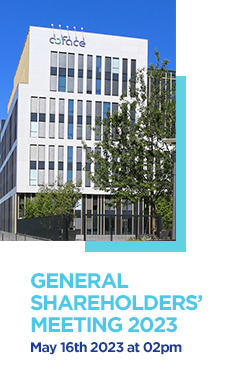

Bahrain
Synthesis
major macro economic indicators
| 2020 | 2021 | 2022 | 2023 (e) | 2024 (f) | |
|---|---|---|---|---|---|
| GDP growth (%) | -4.6 | 2.7 | 4.2 | 2.8 | 3.5 |
| Inflation (yearly average, %) | -2.3 | -0.6 | 3.6 | 1.0 | 2.0 |
| Budget balance (% GDP) | -16.3 | -11.6 | -5.6 | -7.0 | -5.0 |
| Current account balance (% GDP) | -9.4 | 6.6 | 9.1 | 4.5 | 6.0 |
| Public debt (% GDP) | 128.5 | 126.3 | 117.6 | 125.0 | 125.0 |
(e): Estimate (f): Forecast
STRENGTHS
- Solid banking sector, developed financial hub
- More diversified economy compared with its GCC neighbours
- Large aluminium exports, making Bahrain the eighth-largest exporter in the World
- Easy policy making process, secured once again after the elections in November 2022; no challenge to the authorities
- Causeway to Saudi Arabia supports tourism flows
- Support of other Gulf countries, and hydrocarbon revenues
WEAKNESSES
- High fiscal and external breakeven oil prices
- High level of public debt
- Fiscal and export dependence on oil and aluminum sales, exposure to volatility in commodity prices
- Unstable political landscape
- Dependence on foreign workers
Risk assessment
Growth will stabilise in 2024
Bahraini economic growth in 2024 is expected to retain the firmness of 2023, mainly on back of higher energy prices, easing monetary policy as a consequence of the peg to the dollar (the US Fed is expected to start a rate-cutting cycle in the second half of the year), and stronger export growth (net exports are estimated at around 10% of GDP in 2023). In line with continuing moderate global economic growth, the firm steel and aluminium average prices will support domestic economic expansion, Bahrain being one of the world’s largest producers and exporters of the latter which account for around 20% of total exports. Moreover, stronger economic growth in Bahrain’s key export markets such as Saudi Arabia and the United Arab Emirates (UAE) will also sustain the contribution of net goods and services exports to the growth performance. Private consumption will continue to be the key growth driver – it accounts for around 40% of GDP – thanks to easing inflation. In addition, Bahrain will continue to attract strong foreign direct investments (in 2022, it rose nearly 6% to USD 34.5 billion from a year earlier), helped by the authorities’ efforts to improve the business environment as part of the Vision 2030 program, which is focused on reducing reliance on oil and gas. The USD 7.5 billion provided by the GCC Development Fund under the 2018-2024 USD 10.2 billion credit line has been the key driver of large-scale investments. However, the contribution from government consumption will gradually ease in line with the Fiscal Balance Program and the government’s commitment to implement expenditure-cutting measures in exchange for financial assistance from its Gulf neighbours.
Wider current account surplus and fiscal consolidation helped by rising energy prices
In 2024, increasing hydrocarbon prices will result in a wider current account surplus (nearly half of merchandise exports revenue are derived from hydrocarbons). However, production volume will remain flat compared with 2023 due to Bahrain’s compliance with the OPEC+ cuts which have been extended until end-2024. Higher revenues related to aluminium and steel exports will also be a key driver of wider goods trade surplus. Remittance outflows will continue to add to the secondary income deficit as foreign workers will continue to return to Bahrain. Service exports, mainly in the form of resilient tourism, will also contribute to the current account surplus, which will remain above its historical level.
Current oil prices on the spot market are also well below the fiscal breakeven oil prices for Bahrain and are estimated at USD 126 per barrel. This will continue to weigh on the fiscal balance (hydrocarbon revenues account nearly 70% of total fiscal revenue) and have prompted the introduction of revenue-increasing reforms such as a corporate tax. In May 2023, the economic authorities announced the introduction of a corporate tax once an international agreement is reached on the OECD-G20 framework. Based on an initial report, the tax is expected to be 15% for large multinational companies. On the expenditure side, the authorities’ efforts to cut further both current and capital spending within the Fiscal Balance Programme will help to support the narrowing of the deficit, but this will not be enough to reduce the debt burden. The need persists to create public-sector jobs for nationals and the implementation of the Economic Recovery Plan. In addition, transfers, which account for around 20% of total expenditures and help maintain social stability, are poorly targeted. Consequently, Bahrain’s fiscal position will remain weak.
No major political and social instability, but long-term threats persist
Bahrain has a functioning parliament and no major political tension is expected in the short term. The Sunni Al Khalifa family has reigned since 1783. Hamad bin Isa bin Salman has been the king since February 2002. The political scene seems complicated over the longer term, due to the feelings of political and economic marginalisation on the part of the Shia population, who represent around 60% of the population. Additionally, increasing economic dependence on Saudi Arabia, ineffective separation of powers and limited civil liberties will represent challenges. The normalisation of diplomatic relations with Israel in 2020 will continue to improve their trade ties through an anticipated signature of a free trade agreement. Recent Saudi-Iranian rapprochement may induce Bahrain to follow suit despite Bahrain’s accusation that Iran is supporting subversive elements among its Shia population. For the time being, both countries are keeping a low profile. Last but not least, Bahrain is host to the US fifth fleet.
Last updated: November 2023






